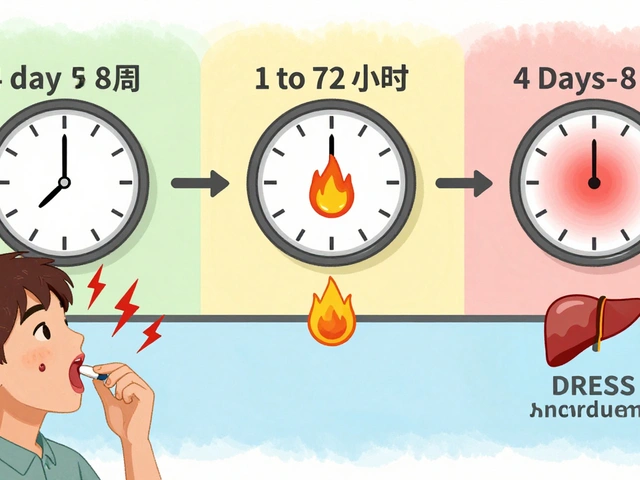Endometrial hyperplasia: understand the thickened uterine lining
Endometrial hyperplasia means the lining of the uterus (endometrium) has become too thick. That sounds simple, but it matters because some types can turn into endometrial cancer if left untreated. You don’t have to panic, but you should know the signs, how doctors check it, and your treatment choices.
Causes & symptoms
The common cause is too much estrogen without enough progesterone to balance it. That can happen with polycystic ovary syndrome (PCOS), obesity, anovulation (when you don’t ovulate), or hormone therapy like tamoxifen. Age plays a role: it’s more likely around menopause but can occur at any adult age.
Typical symptoms are abnormal uterine bleeding — heavier periods, bleeding between periods, or any bleeding after menopause. Some people only notice irregular spotting. If you have persistent changes in bleeding, don’t ignore them.
How it’s diagnosed and what to expect
Diagnosis starts with a visit and a pelvic exam. The usual tests are a transvaginal ultrasound to measure lining thickness and an endometrial biopsy to check cells under a microscope. Sometimes a hysteroscopy (a camera inside the uterus) or a D&C (dilation and curettage) is needed to get a better sample.
The biopsy tells whether the hyperplasia is simple or complex, and whether atypical (abnormal) cells are present. Atypical hyperplasia has a higher risk of turning into cancer and usually needs more aggressive treatment.
Treatment depends on the type of hyperplasia, your symptoms, and whether you want children. For non-atypical hyperplasia, many doctors use progestin therapy — either oral pills, injections, or a levonorgestrel IUD (Mirena). The IUD often works well because it delivers hormone right where it’s needed.
If atypical hyperplasia is found, or if you’ve finished childbearing and want a definitive fix, hysterectomy (removal of the uterus) is a common recommendation. Some patients with atypical disease may try high-dose progestin under close monitoring, but that requires frequent follow-up.
Follow-up usually means repeat biopsies or ultrasounds every few months at first, then less often if the lining returns to normal. Weight loss, controlling diabetes, and treating PCOS lower estrogen exposure and reduce recurrence risk.
When should you see a doctor now? Any unusual bleeding — heavier periods than usual, bleeding after sex, or bleeding after menopause — deserves a prompt check. Don’t wait for a scheduled annual visit.
Ask your clinician for a clear plan: what tests they recommend, expected timeline, side effects of treatments, and fertility implications if you want children. If you’re considering hormone treatments bought online, talk to your doctor first — dosing and monitoring matter.
Endometrial hyperplasia can be treated effectively when caught early. Stay alert to your body, get checked for odd bleeding, and work with your provider on a follow-up plan you understand.

The potential use of dydrogesterone for the treatment of endometrial hyperplasia
Hey folks! In our latest entry, we will be discussing the potential use of dydrogesterone for the treatment of endometrial hyperplasia. This is an extremely important topic since endometrial hyperplasia, an abnormal thickening of the lining of the uterus, is of great concern to many. Significantly, dydrogesterone, a progestin medication, could be a promising solution in dealing with this condition. Join us as we delve into the depths of this matter, exploring the benefits and potential implications. We hope this discussion brings clarity and contributes to your overall health awareness.
View More




